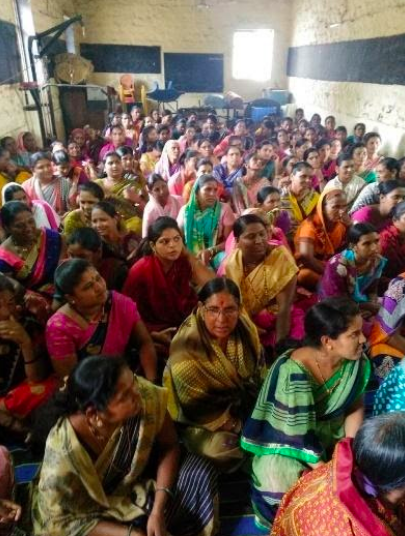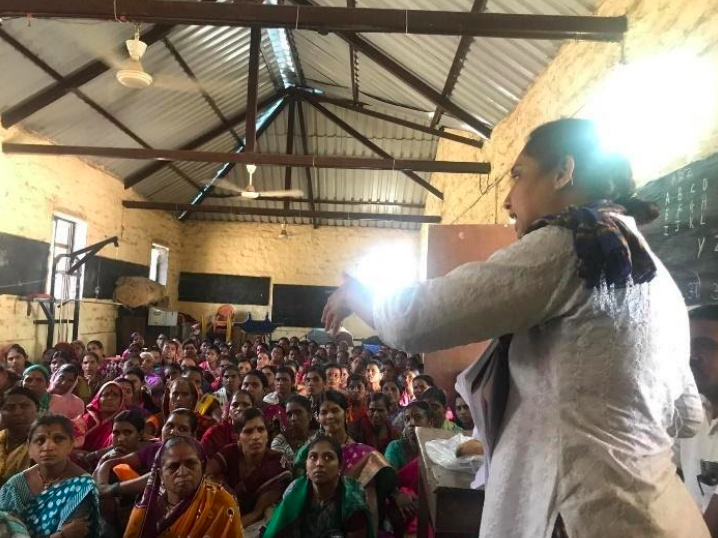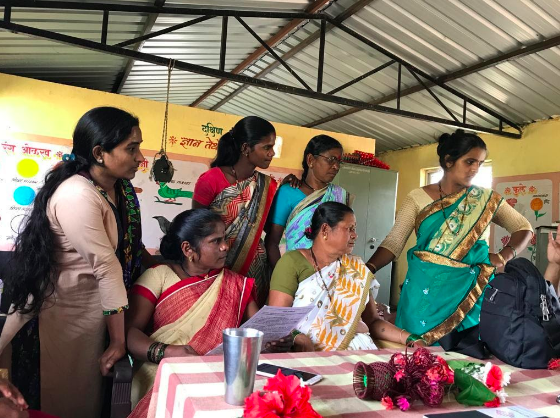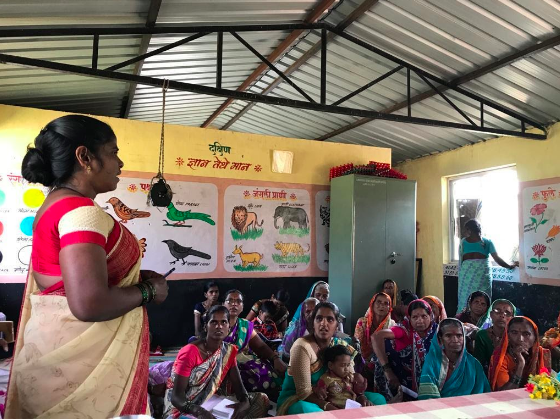By Sia Nowrojee, Executive Director, 3D Program for Girls and Women
Voice means giving all members of a community a role in local decision-making processes. The 3D Program for Girls and Women is committed to amplifying the voices of girls and women as a means to advance gender equality. We facilitate partnerships with NGOs and at the local level to better meet the needs of girls and women and provide them with opportunities to have their voices heard. In rural Pune District, India, the 3D Program is working in partnership with NGOs MASUM, Chaitanya and the International Center for Research on Women (ICRW) Asia to create village-level platforms that amplify the voices of girls and women to strengthen their participation in local governance and increase the accountability of public servants.
Specifically, the program creates and supports village-level committees, known as Village Convergence Planning Committees or VCPCs. The committees are created and led by village women. In addition to girls and women, VCPC members include government workers across sectors at the village level, such as the local village council head, the community health worker, the head teacher and the community police representative. The VCPCs meet monthly to discuss girls’ and women’s priorities and problems and identify solutions to those problems. The committees are linked to government departments at the administrative block and district levels, creating much-needed links between village-level realities, block-level problem-solving, and district-level decision-making. This ensures that girls’ and women’s experiences of programs and their priorities inform local and district-level government responses and planning. The mechanism also allows for much-needed feedback loops between girls and women at the community level and decision-makers at the village, block and district levels, strengthening government programs and accountability.


The women-led VCPCs facilitate problem-solving in three ways:
- Solutions are found for local problems by VCPC women members working together with local male and female village officials who are also VCPC members, with commitments made and timelines set at VCPC meetings. Examples range from addressing water shortages to ensuring sanitary napkin supplies during the COVID pandemic.
- Problems that cannot be resolved at the village level are taken by VCPC participants to the block level and resolved by Block Development Officers and other officials. Examples range from registration to ensure property rights for women to increasing Internet access in remote villages.
- Where there is no known program to resolve the issue, the 3D Program listens to girls and women and then designs and demonstrates a solution for them. Findings are documented as case studies and shared with government, private sector and civil society partners. Examples include a job skills training and placement program for rural young women, gender training for public transportation officials to improve the safety of girls and women on rural buses, and assessing the acceptability of reusable cloth sanitary napkins to address gaps in supply and quality.
The VCPCs differ from other women’s collectives in that they are multi-sectoral, include both girls and women, and create a direct two-way link between girls and women at the village level and the government officials at all administrative levels who are accountable to them. They do not seek to replace existing collectives such as self-help groups, which tend to focus primarily on financial issues and whose membership is reserved for only women. Nor do they seek to replace existing rural governance processes, such as Mahila Gram Sabhas or women’s governance committees, which are supposed to take place regularly but often do not. Instead, VCPCs are designed to facilitate girls’ and women’s participation and engagement in local governance, build their leadership, and ultimately strengthen those processes.


VCPC meeting in Khed Village, Pune, India. Photo by the 3D Program for Girls and Women, October 2019.
There is evidence that is happening. In one village where there is an active VCPC, Mahila Gram Sabhas are taking place more regularly. Additionally, VCPC members, who now have a better understanding of local governance processes and hierarchies, regularly follow-up with government officials and hold them accountable. VCPCs members have also been actively identifying the most vulnerable girls and women in their villages who are eligible for government entitlements and programs and have even helped to enroll them. During COVID, the VCPCs have proved to be important platforms for women to come together (via telephone during lockdowns) to continue to advocate for themselves and the most vulnerable among them. VCPC members have also taken an active role in the distribution of vital food rations and other supplies.
The 3D Program is currently implementing the VCPC model in two blocks or talukas, Purandar and Khed in rural Pune District, Maharashtra State, and our partners will be scaling up the model across and beyond Maharashtra.

